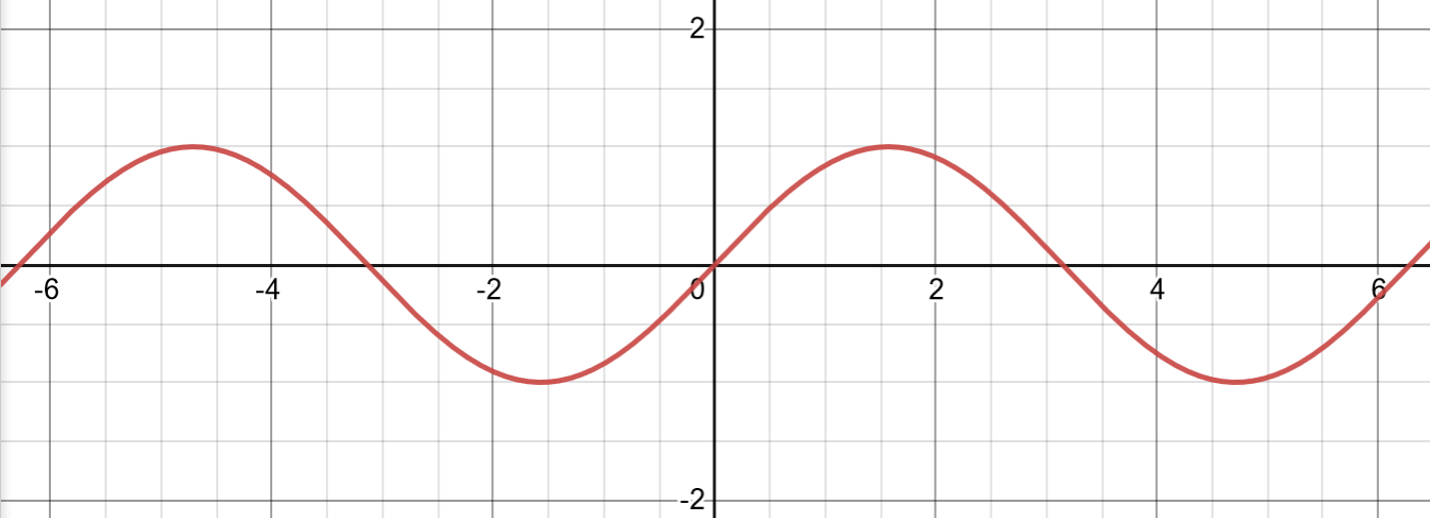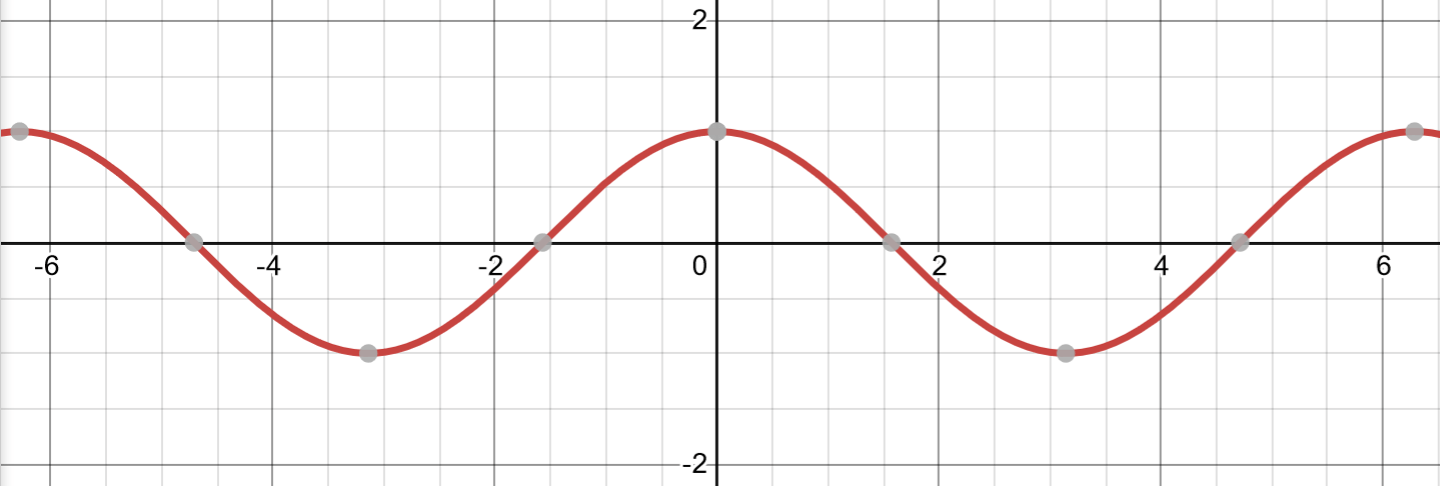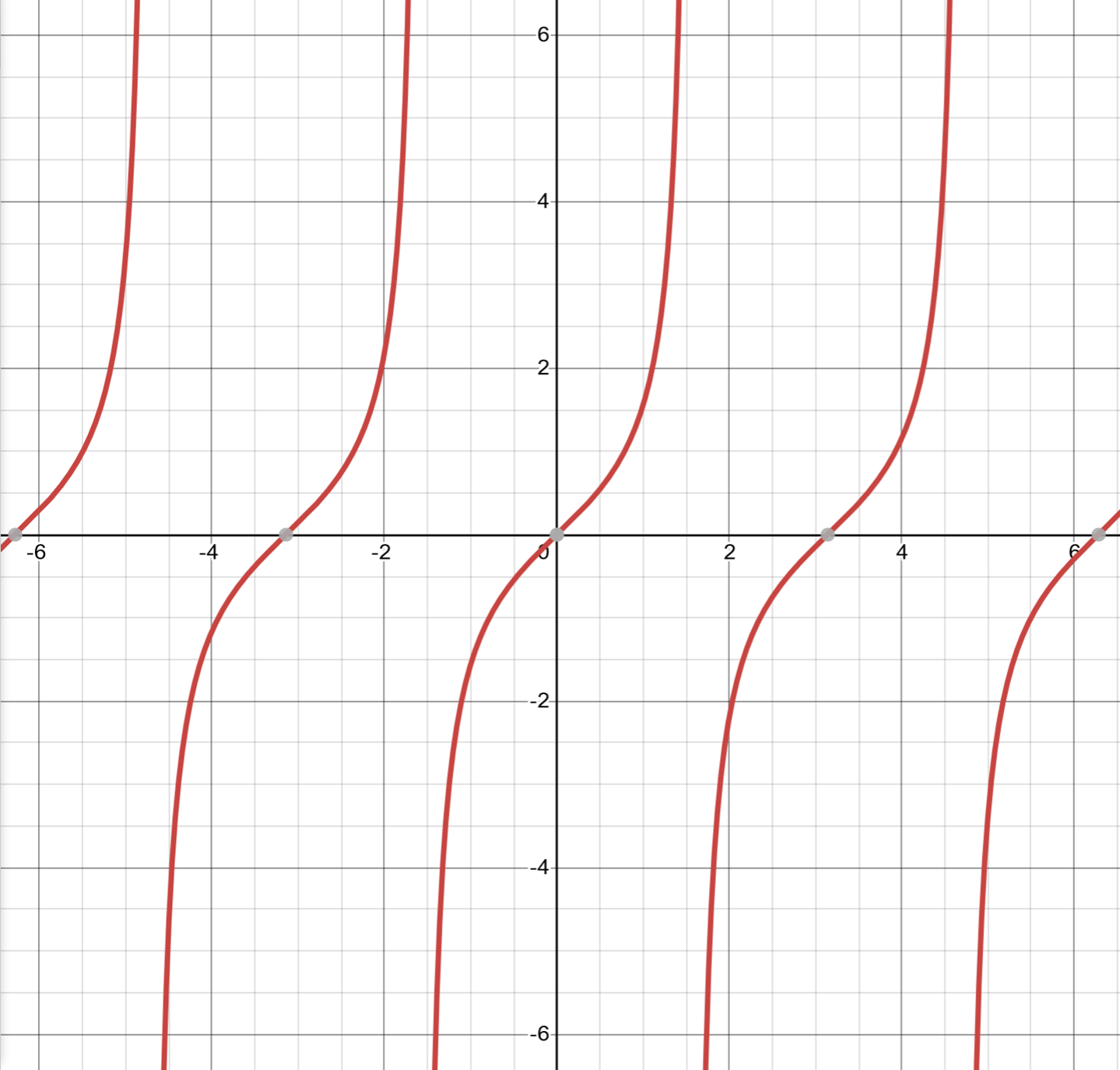The following graphs display the parent function for a , , and function. Sine and cosine graphs are often referred to as waves, due to their pattern. The characteristics of these wave-like functions will be explored later.

As you can see, a sine curve looks like a wave. This means that it has certain wave-like properties such as an amplitude and a period.
The amplitude of a wave is the height of the wave from the -axis to the peak. Note that the amplitude is the same for the peak above the axis and the peak below the axis. The amplitude of the example above, , is .
What the amplitude really tells us is the maximum and minimum value of the graph. This means that the maximum and minimum values of are and .
The period of a wave is the distance it takes to complete one wave-like pattern. For a sine graph, you can remember the pattern of the wave by the phrase “middle-high-middle-low-middle.” This suggests that the curve will start at the -axis, increase to , decrease to the -axis again, and finish at .
In the example above, the period begins at and ends at . This means that the period is . The halfway point of the period is at .

The amplitude of the parent cosine graph is the same as that of the sine graph: . This means that the maximum value for a is and the minimum value is .
The period of the wave is also . However, the wave looks a bit different from the sine wave. The pattern for a cosine wave can be remembered as “high-middle-low-middle-high.” It begins at at the origin, decreases to , then increases back to .

The graph of is much different from sine and cosine. As you can see, it is not represented by a wave like the others. Instead, you will see a cubic-like curve that repeats several times. Note that there are vertical asymptotes that separate each curve. If you need a refresher on asymptotes, review the chapter Nonlinear functions and graphs.
Beginning at the origin, you will see that the curves intersect the -axis at intervals of in both the positive and negative directions. The vertical asymptotes occur at intervals of in both directions as well, but beginning at .
You will often see sine and cosine functions that are a bit different from their parent functions. In these cases, we need to know how to find the amplitude and period without using a graph.
You can find the amplitude of a sine or cosine wave by finding the value in front of the function. The function has no number in front of the function, so we must assume that there is a . That is why the amplitude of the functions above is . Here is another example:
Find the amplitude of the following function:
The amplitude of the function is . This is also the maximum value of the function. The minimum of the function is .
Find the period by figuring out what value you need to multiply into the inside of the function to get the coefficient of to equal . Normally, the inside of the function is just . The coefficient here is , and we have to multiply by to get it to equal . Here is another example of finding the period:
Find the period of the following function:
Find out what value we need to multiply into the function to get a coefficient of for . The current coefficient is .
The period of the function is .
There are several trigonometric identities, which are the relationships between different trigonometric functions. However, for the ACT test you will only need to know one of them:
The in this identity can be anything, as long as the value is identical between the two functions. For instance, the functions could have inside them instead of just :
Sign up for free to take 3 quiz questions on this topic